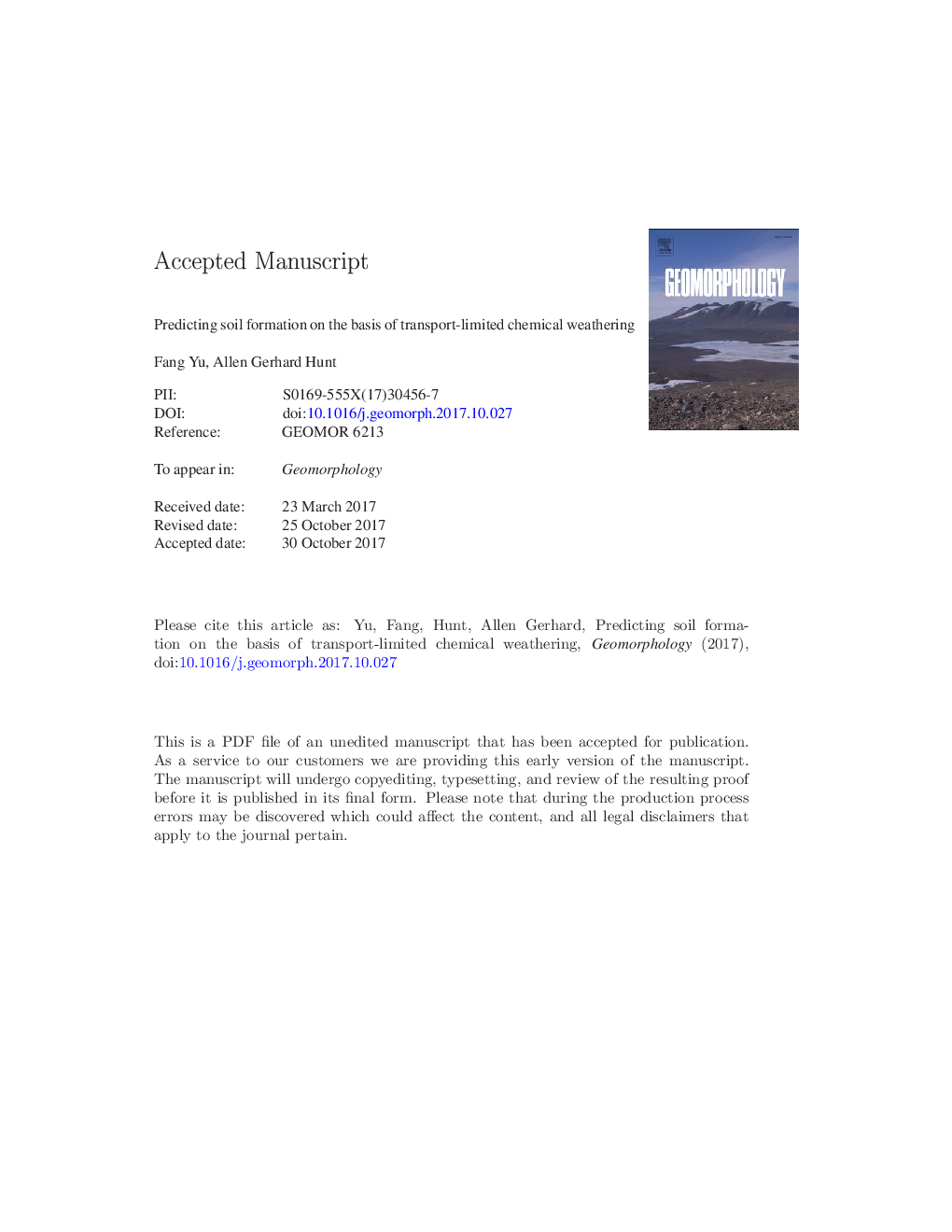| Article ID | Journal | Published Year | Pages | File Type |
|---|---|---|---|---|
| 8908272 | Geomorphology | 2018 | 40 Pages |
Abstract
Soil production is closely related to chemical weathering. It has been shown that, under the assumption that chemical weathering is limited by solute transport, the process of soil production is predictable. However, solute transport in soil cannot be described by Gaussian transport. In this paper, we propose an approach based on percolation theory describing non-Gaussian transport of solute to predict soil formation (the net production of soil) by considering both soil production from chemical weathering and removal of soil from erosion. Our prediction shows agreement with observed soil depths in the field. Theoretical soil formation rates are also compared with published rates predicted using soil age-profile thickness (SAST) method. Our formulation can be incorporated directly into landscape evolution models on a point-to-point basis as long as such models account for surface water routing associated with overland flow. Further, our treatment can be scaled-up to address complications associated with continental-scale applications, including those from climate change, such as changes in vegetation, or surface flow organization. The ability to predict soil formation rates has implications for understanding Earth's climate system on account of the relationship to chemical weathering of silicate minerals with the associated drawdown of atmospheric carbon, but it is also important in geomorphology for understanding landscape evolution, including for example, the shapes of hillslopes, and the net transport of sediments to sedimentary basins.
Related Topics
Physical Sciences and Engineering
Earth and Planetary Sciences
Earth-Surface Processes
Authors
Fang Yu, Allen Gerhard Hunt,
